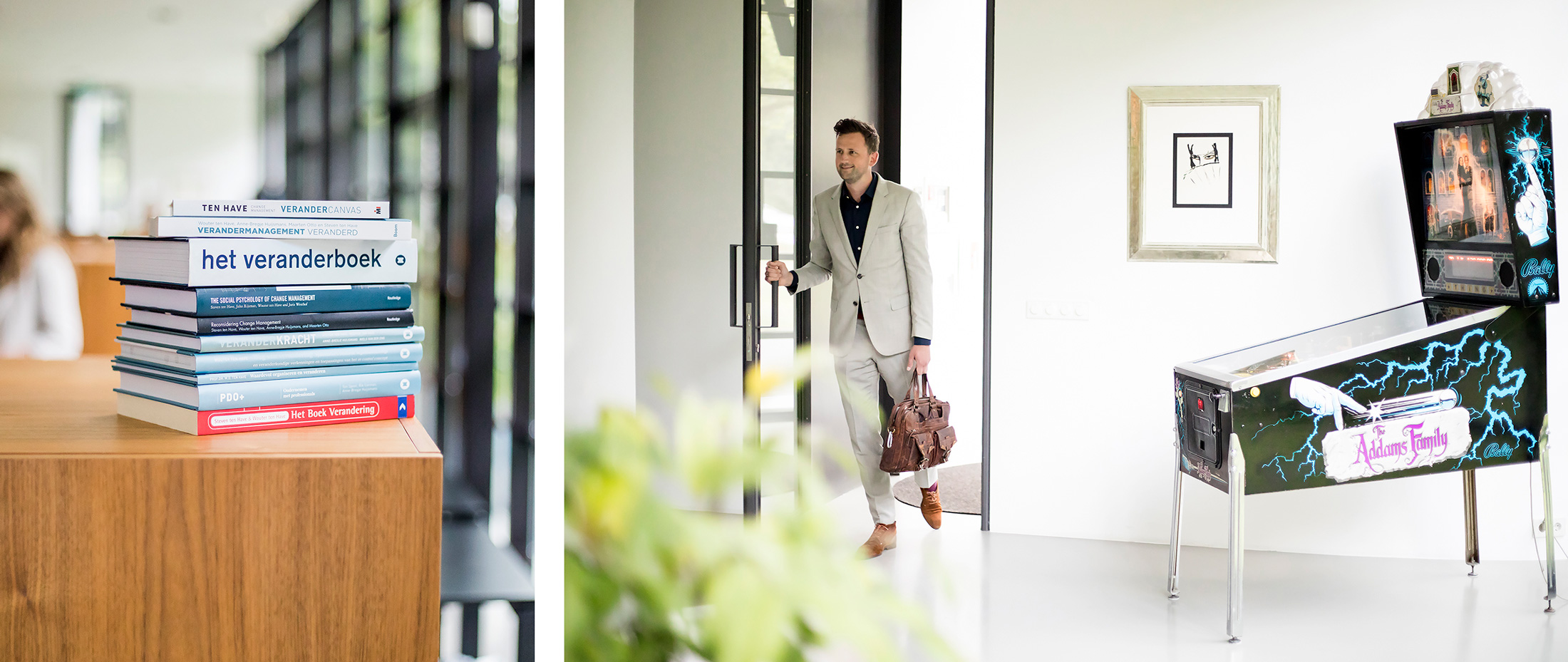Our vision
A comprehensive vision of change
TEN HAVE Change Management is a management consultancy that specializes in change management. It is our ambition to bring the best our field has to offer in house. This allows us to optimally support our clients in realizing the desired change. We do this by connecting their dreams, ambitions and goals to available knowledge, insights and ideas in the field of change management. We map out the situation and form a clear diagnosis. We translate this into a change process design. This is how we substantiate purposive change. It is the necessary step between plan and implementation that enables organizational objectives to be sustainably achieved.
Change competence as a fundament
Based on scientific research, we distinguish five factors that determine the success of change. Together we call these five factors ‘Change competence’. This reflects our comprehensive vision of change.
Our ‘Change competence’ model is pivotal to how we think and act. We have developed several proven applications in the field of Change competence, such as the Change Canvas and a Change competence measurement. If you want (to know how) to make all this transparent for your organization, department or team, visit www.changecompetence.com.
Change vision & change capacity
An organization’s ability to change depends wholly on the connection that is made between the change vision and change capacity. The change vision connects the organization’s ambition to the effects and consequences of this ambition for the specific departments and groups (people). The change capacity is the organization’s ability to adapt to the changing circumstances. The necessary connection between the intended vision and the required capacity is achieved by designing an integral change process. This enables the change to be implemented in a consistent manner and to steer it towards the achievement of the change objectives.
The Change Competence Model®
The Rationale is about the ‘why’ of change: this must be both logical and appealing. We call the rationale the ‘big story’ of change. It is important that this story is known by all managers and employees involved in the change.
In Effect it is not about the ‘big story’, but the ‘little story’. For a group or the individual, the question ‘what’s in it for me?’, in terms of results, costs, revenues, feelings and perceptions, must be answered as concrete as possible.
Focus is about the ‘hard’ and ‘soft’ frameworks (‘prevailing circumstances’) which should support the direction of the organization and the related change. This contains, for example, strategic choices, structures and systems, but also organizational values and employees’ job descriptions.
Energy is the ability to change, also called the ‘fuel’. The organization must be willing and able to change. This can be accomplished with support of management, the (available and required) knowledge, experience and motivation of employees and the availability of time, money and other resources.
Connection represents the design and direction of the organizational change. The other factors: Rational, Effect, Focus and Energy are all connected by this factor. All initiatives related to the change (associated with the factors) must be governed in coherence in order to accomplish the desired result.
How we work
Systematically from idea to approach
In our role as architect and director of change, we always stand next to our client. We thoughtfully and purposefully chose the most suitable approach based on a direction and diagnoses we make together. We continuously provide direction and coherence following an integral view of the organization and the change assignment. This allows us to balance the change capacity and the change vision of the organization.
1. Diagnosis
A doctor administers no treatment without a diagnosis. The same is true for us management consultants. When working on organizational change, we start by making a joint change diagnosis. A good diagnosis focuses on what can be built on. It exposes obstacles and offers starting points for focused work on the change task together with the organization.
2. Approach
Together with the client, we design a suitable change approach based on the diagnosis. With a clear change strategy, we work on the various interventions that are needed to realize the change. As part of the process, we monitor, learn and adjust the approach if necessary. Always with an eye for content as well as process. We do not see the implementation separately from the design.
3. Result
The quality of approach, implementation and relationships between the involved people makes or breaks the actual achievement of results. We are satisfied if the goals are achieved and the organization has developed in such a way that it can continue by itself. During the change process, we add value from different areas of expertise, so that the issue at hand is resolved.
